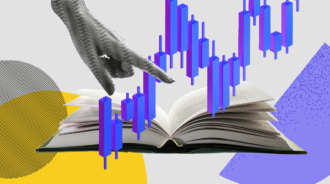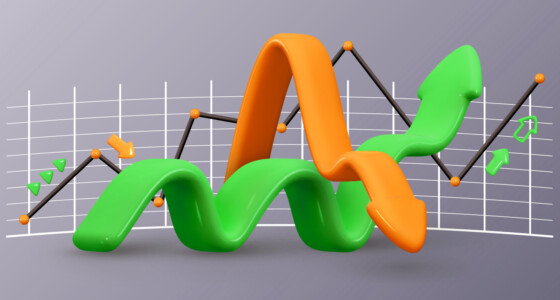

If you plan to invest, the rate of return is one of many factors you should consider. It would be wise to also take into account the associated risk. Risk is the possibility that an asset’s financial performance will differ from expected. A downside risk can be a potential loss from your investment. In contrast, an upside risk is a potential financial gain.
Many performance statistics do not consider the types of risks associated with investments. They only focus on rates of return. In this case, the Sortino ratio comes to the rescue.
What is the Sortino ratio?
The Sortino ratio is a modified version of the Sharpe ratio. It takes its name from Frank A. Sortino. What makes it unique is that it differentiates harmful volatility from the total overall volatility by using the standard deviation of the asset portfolio’s negative return (downside deviation) instead of the total standard deviation.
Formula and calculation of Sortino ratio
Sortino Ratio = (Rp – rf ) / σd
where:
Rp = Actual or expected portfolio return
rf = Risk-free rate
σd = Standard deviation of the downside
So, the Sortino ratio considers the standard deviation of the downside risk, not the total risk (upside + downside), compared to the Sharpe ratio.
What the Sortino ratio can tell you?
Investors, portfolio managers, and analysts use the Sorino ratio to analyze an investment’s return for the given level of bad risk. Because this ratio uses only the downside deviation as its measure of risk, it avoids the problem of using total risk or the standard deviation. This is important because upside volatility benefits investors and isn’t a factor to worry about. This makes the Soritno ratio a measure specifically of downside deviation.

Example of how to use the Sortino ratio
As with the Sharpe ratio, the higher the Sortino ratio, the better. Given a choice between two similar investments, a reasonable investor would pick the one with the higher Sortino ratio since that investment makes a higher return per unit of the bad risk it comes with.
Let’s take the example of mutual fund X and mutual fund Z. Fund X has an annual return of 12% with a downside deviation of 10%. On the other hand, Fund Z has an annual return of 10% with a downside deviation of 7%. The risk-free rate is 2.5%.
The Sortino ratios for each fund would be calculated as follows:
- Mutual fund X Sortino= (12% – 2.5%) / 10% = 0.95
- Mutual fund Z Sortino = (10% – 2.5%) / 7% = 1.07
Mutual fund X has a 2% higher annualized return. However, given their downside deviations, it is not earning that return with as much efficiency as Mutual Fund Z. Based on this property, Mutual Fund Z makes a better investment choice.
For calculations, it is customary to use the risk-free rate of return. Investors can also use expected returns for this purpose. However, for the calculated values to remain meaningful, the investor must be consistent with the type of return they enter into the formula.
The difference between the Sharpe ratio and the Sortino ratio
The Sortino ratio is an improved version of the Sharpe ratio that isolates the negative volatility (or downside) from the total volatility. By dividing the excess return by the portfolio/asset’s downside deviation in place of its total standard deviation.
The Sharpe ratio takes an investment’s good risk negatively. It treats positive and negative deviations similarly, limiting its benefits for investors. However, the investor should focus on the total or standard deviation or simply the downside deviation. Thus, they must choose the ratio that will help them the most.
The bottom line
The Sortino ratio focuses solely on the negative deviation of a portfolio’s returns from the mean. This helps it give a better picture of a portfolio’s risk-adjusted performance because positive volatility is an advantage for investors. It is a valuable tool to evaluate an investment’s return for its level of bad risk.





